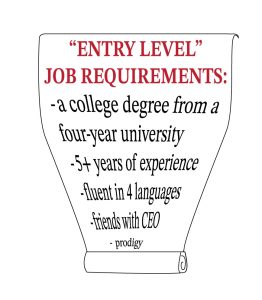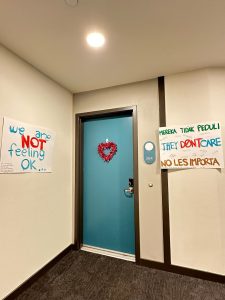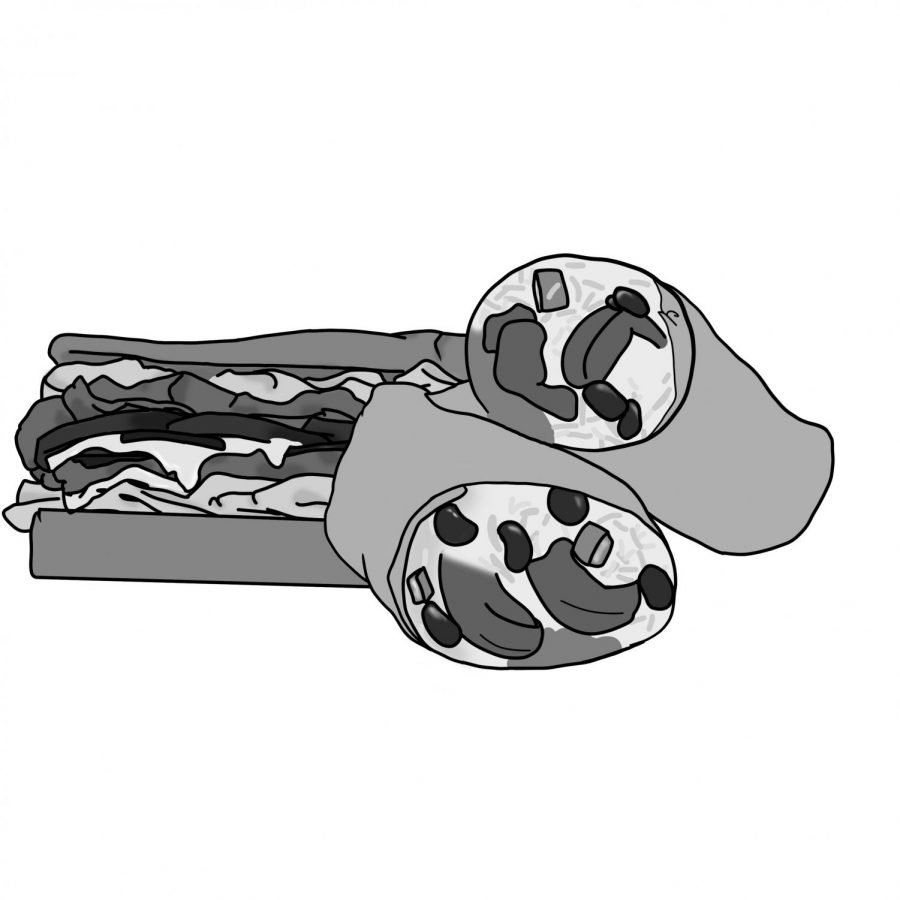It seems that every semester San Diego State finds a way to raise costs for freshmen, squeezing out every dollar we have. Tuition is rising and housing is becoming less affordable. But to me, the most egregious expense of them all is the mandatory meal plan.
At SDSU we have three meal plan options: Flex 5, Flex 7 and the Meals Plus Plan. Flex 5 is the most affordable, only allowing $25.52 to be spent per day with no money on the weekends. If you don’t spend all the money in a day, you lose it. Flex 7 is slightly less affordable but at least gives a weekend allowance of $15.25 each day, which also does not roll over to the next day if not spent. The Meals Plus Plan simply gives students a declining balance of $1,786.50 per semester, which is completely lost if not spent by the end of the year.
The first argument against these plans is obvious: Why are we required to pay the school a balance that will be lost at the end of each day? Why not just use a debit or credit card at the restaurants on campus instead?
Journalism freshman Megan Oytas has the Flex 7 plan and said she struggles with the idea of wasting her unspent balance.
“I feel bad when I have over one dollar left, I feel like I have to go out and spend all of it, because that’s my money basically, and that would be wasted the next day,” Oytas said.
Students often have issues with the Flex 5 and Flex 7 plans, specifically on weekends. The $15 allocated on Saturdays and Sundays are barely enough to buy a sufficient amount of food, especially considering how expensive most places on campus have become. And students on the Flex 5 plan have no choice but to spend additional money that they may not have, which should have just come from the balance they weren’t able to spend on the weekdays.
A 2016 study by the California State University Chancellor’s Office found that 41.6% of CSU students experience food insecurity. Across all 23 CSU campuses, nearly half of students as of 2016 have difficulty affording meals. And due the increase of university fees recently, it’s likely this percentage has grown since the study.
I’m not claiming that meal plans are a significant cause of this figure. Financial hardships are more at play here. However, the meal plans teach students harmful habits with regards to food budgeting, and this can be attributed to food insecurity later on in college when the meal plan is no longer mandatory.
Take the Meals Plus Plan, for example. I am on this plan myself, and still find myself hating the system even if I don’t need to worry about losing a daily balance. The Meals Plus Plan teaches students to not worry about how much they’re spending and to just buy whatever they feel like because they have such a large balance. I’ve found myself intentionally buying food from the Aztec market that I don’t really need, simply because I know I’ll lose the money eventually if I don’t buy a ton of food now.
This is an awful lesson to teach freshmen who are just coming out of high school and have no idea what it’s like to buy their own food. In real life, you don’t lose your money for not spending it. Saving is a good thing, and the school is actively teaching us to spend more than we need.
The Flex 5 and 7 plans may be slightly better at teaching budgeting, but then there’s the problem of students going hungry. The declining balance makes it so students feel obligated to buy more than they need on weekdays, so they don’t go hungry on weekends.
If SDSU simply let us use a debit or credit card, and made the meal plan completely optional, then students could begin to learn how to save money and buy an appropriate amount of food. But the university is denying us of this freedom. We have to buy their plan, even if it starts the formation of bad habits.
The bottom line is the mandatory meal plan is cruel. It is an awful system in all respects, and is significantly detrimental towards every freshman on campus who is forced to buy it. SDSU needs to reevaluate the importance of letting students be able to freely spend their own money, and either make the plan optional or eliminate it all together.
Patrick Doyle is a freshman studying journalism. Follow him on Twitter @PatrickDoyle100.











